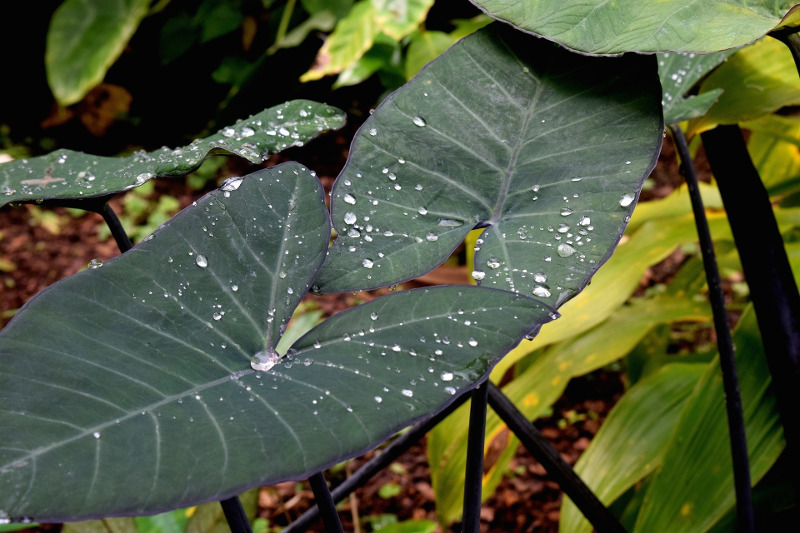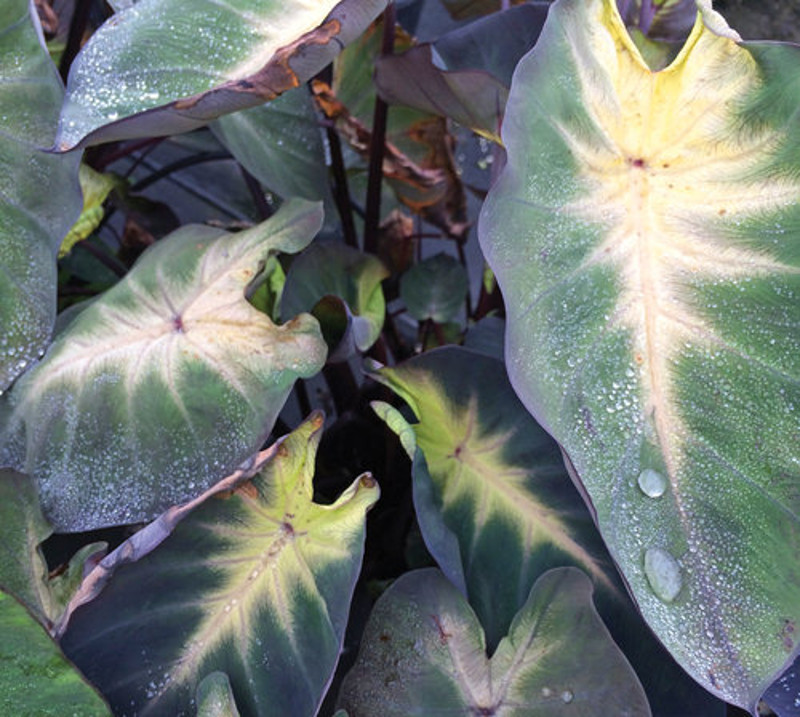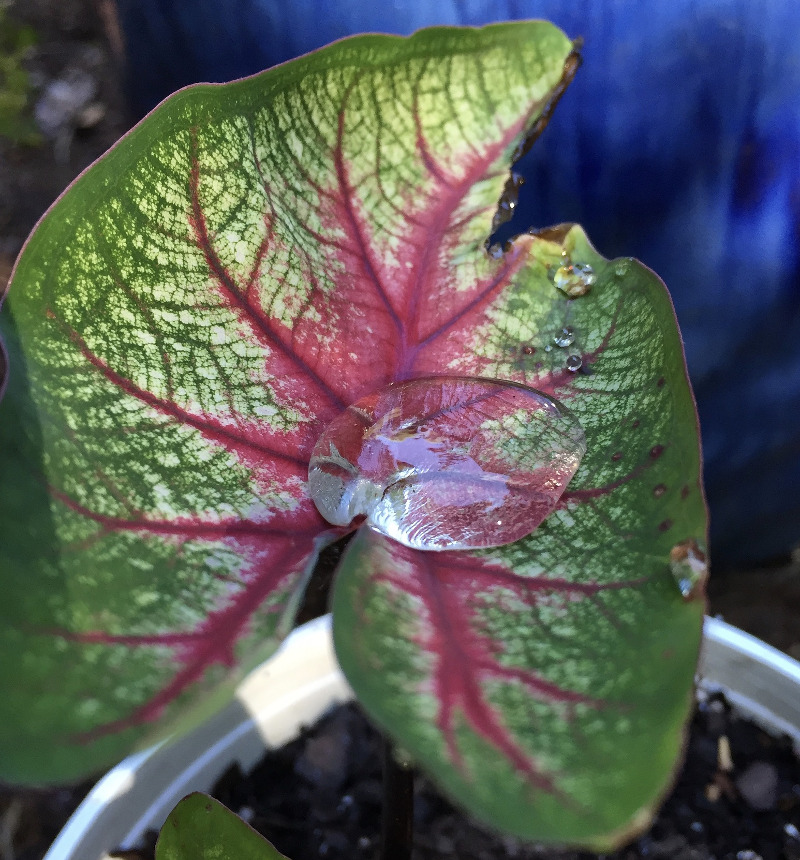Planting Elephant Ears in your garden or a planter bed makes a statement and adds intense greenery thanks to the large foliage. Elephant Ears have high water needs, so the root system needs regular watering for the plant to thrive.

How to tell if the plant needs watered:
Elephant Ears like consistently damp soil, so the plant needs water if the soil is slightly moist. If the soil is dry, then the plant definitely needs water. Other signs your Elephant Ears need water include leaves wilting or drooping. When the foliage shows signs of dehydration, the plant is pretty dry, but if you water thoroughly right away, the plant should perk back up.
Since Elephant Ears have high water needs, overwatering is generally not a concern, although it is possible. The leaves may turn yellow, starting at the tips if the plant is overwatered.
How Often To Water Elephant Ears
Daily watering for newly planted Elephant Ears can help the plant acclimate to its new home. Pay attention to rainfall and humidity levels, which can impact how often the plant will need water. Elephant Ear plants like damp soil, and for new plants that have not yet developed a robust root system, this typically requires regular watering. Water recently planted Elephant Ears daily for the first two weeks, monitor the soil daily for the first year, and water when the soil starts to dry out.
Established Elephant Ears only need to be watered when the soil's surface is dry to the touch. Rainfall may be enough to support the plant, but be mindful of the weather and routinely check the soil. The plant will need to be watered during a drought or even just a stretch of several days without rain.

Too much of a good thing can be a problem, and it is possible to overwater Elephant Ears. Well-draining soil will help shed water and prevent overwatering. Let the soil dry out before watering if you suspect the plant has been overwatered.
Container-grown Elephant Ears will need very regular watering, so expect to water the plant daily. Check the soil and water if the soil is slightly damp but mostly dry.

Best Time To Water Elephant Ears
A plant showing signs of dehydration should be watered right away. Typically, during the summer, water Elephant Ears in the morning. Give the plant time to soak up water before the day heats up since high temperatures and lots of bright light will dry out the soil.
Plants that are actively growing need very consistent watering. During the winter, plants grown outdoors will not need to be watered much if at all. Elephant Ears grown indoors will still need to be watered during the winter, but dormant plants generally do not need to be watered very often.
How to Water Elephant Ears?
Step 1 - Check the soil.
Recently planted Elephant Ears will need to be watered every day for the first week or two. Established plants need water when the soil feels slightly damp.
Step 2 - Saturate the ground around the plant.
Water near the base of the plant, so the root ball is drenched.
Elephant Ears Watering Tips
- Feel the soil and water when the dirt is slightly damp.
- Thoroughly drench the soil.
- Water early in the day to completely hydrate the plant and soil before the increased temperature and sunlight dry things out.
- Container plants or Elephant Ears in bright areas will need to be watered more often.
- Water less during winter months.
 |
Author Alison Cotsonas - Published 12-13-2021 |
